Stamford, Connecticut Blood Testing Facilities
 Represents a LabCorp blood testing facility
Represents a LabCorp blood testing facility Represents a Quest Diagnostics blood testing facility
Represents a Quest Diagnostics blood testing facility

Nearby Labcorp Blood Testing facilities:
- Labcorp Center Distance: 0 m, 1290 Summer St Unit 5100, Stamford, Fairfield County, CT, 6902
- Labcorp Center Distance: 5 m, 2 Dearfield Dr Ste 101, Greenwich, Fairfield County, CT, 6831
- Labcorp Center Distance: 13 m, 297 Knollwood Rd Ste 102, White Plains, Westchester County, NY, 10607
- Labcorp Center Distance: 15 m, 775 Park Ave Ste 350, Huntington, Suffolk County, NY, 11743
- Labcorp Center Distance: 16 m, 175 Memorial Hwy, New Rochelle, Westchester County, NY, 10801
- Labcorp Center Distance: 18 m, 984 N Broadway Ste 301, Yonkers, Westchester County, NY, 10701
- Labcorp Center Distance: 19 m, 2171 Jericho Tpke. Suite 200, Commack, Suffolk County, NY, 11725
- Labcorp Center Distance: 20 m, 311 North Midland Ave, Nyack, Rockland County, NY, 10960
- Labcorp Center Distance: 21 m, 99 Dutch Hill Rd Ste 1200, Orangeburg, Rockland County, NY, 10962
- Labcorp Center Distance: 22 m, 2 Brooksite Dr, Smithtown, Suffolk County, NY, 11787
- Labcorp Center Distance: 23 m, 46 Route 25A Suite 2, Setauket, Suffolk County, NY, 11733
- Labcorp Center Distance: 24 m, 1985 Crompond Rd Bldg B, Cortlandt Manor, Westchester County, NY, 10567
- Labcorp Center Distance: 25 m, 2500 Nesconset Hwy Ste 30-31, Stony Brook, Suffolk County, NY, 11790
- Labcorp Center Distance: 26 m, 2154 Newbridge Road Suite 2, Bellmore, Nassau County, NY, 11710
- Labcorp Center Distance: 27 m, 5225 Route 347 Bldg 1314, Port Jefferson Stati, Suffolk County, NY, 11776
- Labcorp Center Distance: 28 m, 1540 Route 202 Ste 6, Pomona, Rockland County, NY, 10970
- Labcorp Center Distance: 29 m, 325 Middle Country Rd Ste C, Selden, Suffolk County, NY, 11784
- Labcorp Center Distance: 30 m, 4830 Sunrise Hwy, Sayville, Suffolk County, NY, 11782
- Labcorp Center Distance: 31 m, 1723 N Ocean Ave Ste D, Medford, Suffolk County, NY, 11763
- Labcorp Center Distance: 32 m, 680 Broadway Unit B3, Paterson, Passaic County, NJ, 7514
- Labcorp Center Distance: 33 m, 1139 Main Avenue, Clifton, Passaic County, NJ, 7015
- Labcorp Center Distance: 34 m, 45 Route 25A Ste E2, Shoreham, Suffolk County, NY, 11786
- Labcorp Center Distance: 35 m, 307 Hamburg Tpke Ste 103, Wayne, Passaic County, NJ, 7470
- Labcorp Center Distance: 36 m, 1031 Mcbride Ave Ste D-204, Woodland Park, Passaic County, NJ, 7424
- Labcorp Center Distance: 37 m, 200 Westage Business Ctr Ste 133, Fishkill, Dutchess County, NY, 12524
- Labcorp Center Distance: 38 m, 7316 13Th Avenue 2Nd Fl, Brooklyn, Kings County, NY, 11228
- Labcorp Center Distance: 39 m, 745 Route 17M - Ste 102, Monroe, Orange County, NY, 10950
- Labcorp Center Distance: 40 m, 448 Temple Hill Rd, New Windsor, Orange County, NY, 12553
- Labcorp Center Distance: 41 m, 5 Hudson Valley Profess Plaza, Newburgh, Orange County, NY, 12550
- Labcorp Center Distance: 42 m, 617 A Montauk Hwy, Center Moriches, Suffolk County, NY, 11934
- Labcorp Center Distance: 43 m, 2031 Forest Ave Stes 12 13, Staten Island, Richmond County, NY, 10303
- Labcorp Center Distance: 44 m, 31 New Dorp Ln, Staten Island, Richmond County, NY, 10306
- Labcorp Center Distance: 45 m, 2333 Morris Ave Ste A12, Union, Union County, NJ, 7083
- Labcorp Center Distance: 46 m, 887 Old Country Rd Ste C, Riverhead, Suffolk County, NY, 11901
- Labcorp Center Distance: 47 m, 4434 Amboy Rd 2Nd Fl, Staten Island, Richmond County, NY, 10312
- Labcorp Center Distance: 48 m, 1025 W Saint Georges Ave Ste 1, Linden, Union County, NJ, 7036
- Labcorp Center Distance: 50 m, 207 Washington St, Poughkeepsie, Dutchess County, NY, 12601
- Labcorp Center Distance: 51 m, 594 East Main Street, Middletown, Orange County, NY, 10940
- Labcorp Center Distance: 52 m, 313 South Ave Ste 104, Fanwood, Union County, NJ, 7023
- Labcorp Center Distance: 53 m, 222 State Route 299, Highland, Ulster County, NY, 12528
- Labcorp Center Distance: 54 m, 406 Route 23 Suite 2, Franklin, Sussex County, NJ, 7416
- Labcorp Center Distance: 55 m, 279 Main St Ste 200, New Paltz, Ulster County, NY, 12561
- Labcorp Center Distance: 56 m, 160 White Rd Ste 1, Little Silver, Monmouth County, NJ, 7739
- Labcorp Center Distance: 57 m, 775 Mountain Blvd. Ste 102, Watchung, Somerset County, NJ, 7069
- Labcorp Center Distance: 58 m, 40 Morristown Rd Ste 2A, Bernardsville, Somerset County, NJ, 7924
- Labcorp Center Distance: 59 m, 66 Town Centre Suite 310, Succasunna, Other, NJ, 7876
- Labcorp Center Distance: 60 m, 227 Newton Sparta Rd Ste 8, Newton, Sussex County, NJ, 7860
- Labcorp Center Distance: 61 m, 2284 Berlin Turnpike, Newington, Hartford County, CT, 6111
- Labcorp Center Distance: 63 m, 77 Veronica Ave Ste 101, Somerset, Somerset County, NJ, 8873
- Labcorp Center Distance: 64 m, 368 Broadway Ste 303, Kingston, Ulster County, NY, 12401
- Labcorp Center Distance: 65 m, 330 Washington Avenue, Kingston, Ulster County, NY, 12401
Nearby Quest Blood Testing facilities:
- Quest Center Distance: 0 m, 80 Mill River Street, Stamford, Fairfield County, CT, 06902-3733
- Quest Center Distance: 4 m, 557 Post Rd, Darien, Fairfield County, CT, 06820-3609
- Quest Center Distance: 13 m, 280 Dobbs Ferry Rd, White Plains, Westchester County, NY, 10607-1900
- Quest Center Distance: 16 m, 150 Lockwood Ave, New Rochelle, Westchester County, NY, 10801-4916
- Quest Center Distance: 18 m, 970 N Broadway, Yonkers, Westchester County, NY, 10701-1310
- Quest Center Distance: 19 m, 2171 Jericho Tpke, Commack, Suffolk County, NY, 11725-3412
- Quest Center Distance: 20 m, 3250 Westchester Ave, Bronx, Bronx County, NY, 10461-4500
- Quest Center Distance: 21 m, 2001 Marcus Ave, Lake Success, Nassau County, NY, 11042-1011
- Quest Center Distance: 22 m, 212 Station Plz N, Mineola, Nassau County, NY, 11501-3802
- Quest Center Distance: 23 m, 222 Middle Country Rd, Smithtown, Suffolk County, NY, 11787-2814
- Quest Center Distance: 24 m, 1869A E Main St, Peekskill, Westchester County, NY, 10566-2505
- Quest Center Distance: 25 m, 23 Technology Dr, East Setauket, Suffolk County, NY, 11733-4069
- Quest Center Distance: 26 m, 978 Route 45, Pomona, Rockland County, NY, 10970-3528
- Quest Center Distance: 27 m, 1010 Route 112, Port Jefferson Station, Other, NY, 11776-2054
- Quest Center Distance: 28 m, 235 Boyle Rd, Selden, Suffolk County, NY, 11784-1900
- Quest Center Distance: 29 m, 65 E 76Th St, New York, New York County, NY, 10021-1844
- Quest Center Distance: 30 m, 6122 Fresh Pond Rd, Middle Village, Queens County, NY, 11379-1233
- Quest Center Distance: 31 m, 247 Third Ave, New York, New York County, NY, 10010-7454
- Quest Center Distance: 32 m, 233 Montauk Hwy, West Sayville, Suffolk County, NY, 11796-1811
- Quest Center Distance: 33 m, 570 Expressway Dr South, Medford, Other, NY, 11763-2049
- Quest Center Distance: 34 m, 224-226 Atlantic Ave, Brooklyn, Kings County, NY, 11201-5727
- Quest Center Distance: 35 m, 285 Sills Rd, East Patchogue, Suffolk County, NY, 11772-4869
- Quest Center Distance: 36 m, 500 Union Blvd, Totowa, Passaic County, NJ, 07512-2579
- Quest Center Distance: 37 m, 6144 Route 25A, Wading River, Suffolk County, NY, 11792-2018
- Quest Center Distance: 38 m, 7601 4Th Ave, Brooklyn, Kings County, NY, 11209-3207
- Quest Center Distance: 39 m, 791 Route 17M, Monroe, Orange County, NY, 10950-2620
- Quest Center Distance: 40 m, 347 Fullerton Ave, Newburgh, Orange County, NY, 12550-3726
- Quest Center Distance: 41 m, 653 Forest Ave, Staten Island, Richmond County, NY, 10310-2517
- Quest Center Distance: 42 m, 1460 Victory Blvd, Staten Island, Richmond County, NY, 10310-3914
- Quest Center Distance: 44 m, 74 Commerce Dr, Riverhead, Suffolk County, NY, 11901-3105
- Quest Center Distance: 45 m, 1896 Morris Ave, Union, Union County, NJ, 07083-3535
- Quest Center Distance: 46 m, 15 South Elm Street, Wallingford, New Haven County, CT, 06492-4741
- Quest Center Distance: 47 m, 3733 Richmond Ave, Staten Island, Richmond County, NY, 10312-3856
- Quest Center Distance: 48 m, 4855 Hylan Blvd, Staten Island, Richmond County, NY, 10312-6319
- Quest Center Distance: 50 m, 189 Elm St, Westfield, Union County, NJ, 07090-3145
- Quest Center Distance: 51 m, 7001 Amboy Rd, Staten Island, Richmond County, NY, 10307-1444
- Quest Center Distance: 52 m, 365 Queen Street, Southington, Hartford County, CT, 06489-0000
- Quest Center Distance: 53 m, 3999 Albany Post Road, Hyde Park, Dutchess County, NY, 12538-1947
- Quest Center Distance: 54 m, 935 Farmington Avenue, Bristol, Hartford County, CT, 06010-3927
- Quest Center Distance: 55 m, 246 Main St, New Paltz, Ulster County, NY, 12561-1608
- Quest Center Distance: 56 m, 240 Maple Ave, Red Bank, Monmouth County, NJ, 07701-1731
- Quest Center Distance: 57 m, 37 Mountain Blvd, Warren, Somerset County, NJ, 07059-2622
- Quest Center Distance: 58 m, 1 Anderson Hill Rd, Bernardsville, Somerset County, NJ, 07924-2320
- Quest Center Distance: 59 m, 45 S Main St, Unionville, Hartford County, CT, 06085-1278
- Quest Center Distance: 61 m, 125 Newton Sparta Rd, Newton, Sussex County, NJ, 07860-2812
- Quest Center Distance: 62 m, 601 W Union Ave, Bound Brook, Somerset County, NJ, 08805-1166
- Quest Center Distance: 63 m, 1809 Corlies Ave, Neptune, Monmouth County, NJ, 07753-4801
- Quest Center Distance: 64 m, 49 Veronica Ave, Somerset, Somerset County, NJ, 08873-6802
- Quest Center Distance: 65 m, 380 Washington Ave, Kingston, Ulster County, NY, 12401-3702
- Quest Center Distance: 66 m, 381 Hopmeadow Street, Simsbury, Hartford County, CT, 06089-9692
- Quest Center Distance: 68 m, 137 Mountain Ave, Hackettstown, Warren County, NJ, 07840-2307
Connecticut Hormone Replacement Therapy Services
The Conscious Evolution Clinic is an Insured and Licensed Medical Clinic which specializes in Hormone Restoration Treatments which optimize health and promote long-term wellness. We have a large and caring staff of experienced clinicians and board-certified physicians, dedicated to serving men and women over the age of thirty throughout the state of Connecticut.
We have streamlined the process required to provide you with the accurate diagnosis and effective treatment that you deserve. We have affiliate doctors all throughout the state of Connecticut that work on our behalf, providing the necessary physical and taking the blood sample that will provide us with all of the information needed to make a complete diagnosis of your hormone status.
HGH Injections for Connecticut Residents
One of the services that we are most proud to provide at the Conscious Evolution Institute is HGH Hormone Replacement Therapy. We feel that Age-Related HGH Deficiency is an under-treated phenomena which can severely impact the physical and psychological health of men and women across the country.
HGH is among the most important hormones produced by our body when it comes to maintaining streamlined and optimized function. Human Growth Hormone is like a throttle for our cellular metabolism, keeping our bodies running as efficiently as possible. HGH Levels start to decline as we enter middle age, however, and many men and women start to lose their vitality as a result of a progressive deficiency of the hormone.
Symptoms of Growth Hormone Deficiency include trouble sleeping, mood swings, changes in body mass, lack of energy, fatigue, poor cholesterol, and reduced cognitive capacity and memory. The Conscious Evolution Institute provides two effective forms of HGH Treatment: Human Growth Hormone Injection Therapy and Sermorelin HGH Alternative. Under most circumstances, both of these treatments are highly effective at restoring hormone balance and mitigating the effects of Growth Hormone Deficiency.
Testosterone Replacement Therapy in Connecticut
We also provide Hormone Restoration Services for men suffering from Testosterone Deficiency. Around middle age, men actually experience a phase of hormonal change that is not entirely unlike menopause. Many doctors actually refer to it as Andropause.
Although the symptoms of Andropause appear much more gradually than menopause, they still have a significant impact on male health: weight gain, frailty, loss of bone mineral density, loss of assertiveness, increased anxiety, and trouble sleeping are all common symptoms, and that's on top of the significant sexual symptoms that are commonly associated with the disorder.
The Conscious Evolution Institute offers comprehensive Testosterone Restoration Therapy for the treatment of Andropause, and you have a number of options when it comes to treatment, from Topical Testosterone to Testosterone Injections and Patches.
Connecticut HCG Therapy for Weight Loss
Not all forms of Hormone Therapy are intended specifically for Hormone Restoration, however. HCG Injections, for example, are actually a highly effective treatment for weight loss. Many men and women struggle significantly with their weight because they are unable to overcome the biggest pitfall of dieting: Hunger.
HCG Injections are incredibly effective because they actually have the ability significantly reduce the uncomfortable sensation of hunger, making it easier to stick with the diet. When HCG Therapy is combined with a Low-Calorie diet, it is possible to lose 5 pounds or more per week, without feeling drained of energy or overwhelmed with hunger.
Major Cities in Connecticut
Bridgeport
Bridgeport is the largest city in the state of Connecticut, and is located on the shores of the southwestern portion of the state. Bridgeport is located on both Long Island Sound and the Pequonnock River. Bridgeport was the city in which the first Subway Restaurant was opened, and P.T. Barnum of the Barnum and Bailey Circus was actually once the mayor of the city.
The largest employers in the city are the People's United Bank, Bridgeport Hospital, and St. Vincent's Medical Center. The city is also home to the University of Bridgeport.
New Haven
New Haven is the second most populous city in Connecticut, and is located slightly to the northeast of Bridgeport, situated on the shore of the eponymously named New Haven Harbor. New Haven is most famous for being the home of the prestigious Ivy League school Yale University, and also goes by the nickname, The Elm City.
Yale University provides the most jobs in the city, but education and healthcare in general are both strong sectors of the local economy. Retail, finance, and marketing also contribute significantly to the New Haven economy.
Stamford
Stamford, Connecticut is located on the southwestern tip of the state, and is the third most populous city in the state of Connecticut. Stamford is located very close to New York City, only around thirty miles from Manhattan. Stamford is considered one of the safest cities both in New England and in the United States as a whole.
Stamford is the most economically active area of Connecticut, with a number of the largest companies headquartered in the city, including Charter Communications, Pitney Bowes, and Crane Companies. A number of companies are based just outside the city limits, including Clairol, NBC, and Xerox.
Hartford
Hartford, Connecticut is the capital city of the state, as well as the fourth most populous city in the state. Because of the state laws in Connecticut, a large number of insurance companies have moved to Hartford to take advantage of the favorable laws, and the city is often referred to as the Insurance Capital of the World.
Hartford has one of the strongest economies in the United States, and is also home to some major national landmarks. Hartford is home to both the oldest park (Bushnell Park), and the oldest art museum (the Wadsworth Atheneum) offered and financed for public use.
Waterbury
Waterbury is located in the west-central region of Connecticut, and is the fifth most populous city in the state. Waterbury garnered the nickname, The Brass City, because it was the number one maker of brassware in the United States. It has also been historically recognized for the clocks and watches made in the region. The largest employers in Waterbury are St. Mary's Hospital, Waterbury Hospital, and the City of Waterbury. Waterbury is home to two museums, the Timexpo Museum and the Mattatuck Museum.
All About Stamford, Connecticut Geographic Area


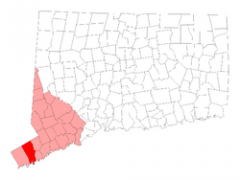
Stamford is a city in Fairfield County, Connecticut, United States. According to the 2010 census, the population of the city is 122,643, making it the fourth largest city in the state. Stamford is in the Bridgeport-Stamford-Norwalk Metro area which is a part of the Greater New York metropolitan area.
Stamford was known as Rippowam by the Native American inhabitants to the region, and the very first European settlers to the area also referred to it as such. The name was later changed to Stamford after a town in Lincolnshire, England. The deed to Stamford was signed on July 1, 1640 between Captain Turner of the New Haven Colony and Chief Ponus. By the Eighteenth century, one of the primary industries of the town was merchandising by water, which was possible due to Stamford's proximity to New York.
In 1692, Stamford was home to a less famous witch trial than the well-known Salem witch trials, which also occurred in 1692. The accusations were less fanatical and smaller-scale but also grew to prominence through gossip and hysterics.
Starting in the late 19th century, New York residents built summer homes on the shoreline, and even back then there were some who moved to Stamford permanently and started commuting to Manhattan by train, although the practice became more popular later. Stamford incorporated as a city in 1893.
In the 1960s and 1970s, Stamford's commercial real estate boomed as corporations relocated from New York City to peripheral areas. A massive urban redevelopment campaign during that time resulted in a downtown with many tall office buildings. The F.D. Rich Co. was the city-designated urban renewal developer of the downtown in an ongoing redevelopment project that was contentious, beginning in the 1960s and continuing through the 1970s. The company put up what was the city's tallest structure, One Landmark Square, at 21 floors high, and the GTE building (now One Stamford Forum), along with the Marriott Hotel, the Stamford Town Center and many of the other downtown office buildings. One Landmark Square has since been dwarfed by the new 35-story Trump Parc condominium tower (topped out), and soon by the 400-foot 39 story Ritz Carlton Hotel and Residences development, another project by the Rich Company in partnership with Cappelli Enterprises. Over the years, other developers have joined in building up the downtown, a process that continued, with breaks during downturns in the economy, through the 1980s, 1990s and into the new century.
Stamford is situated near the southwestern point of Connecticut. It's suburbs include Pound Ridge, New York to the north, Greenwich to the west, and both Darien and New Canaan to the east.
Stamford experiences a humid continental climate (Koppen climate classification Dfa). The average high temperature annually is 62.5 °F (16.9 °C). The average low temperature annually is 40.5 °F (4.7 °C). The highest recorded temperature was 104 °F (40 °C), and the lowest recorded temperature was na18 °F ( na28 °C). The average warmest month is July. January is the average coolest month. The maximum average precipitation occurs in May. The average precipitation from November to March is 21.39 inches (543 mm). During the winter months, it is not uncommon for snowfall to occur in the northern part of the city, while remaining rain in the downtown and coastal areas of the city. This is mainly due to the tempering effects of Long Island Sound on climate.
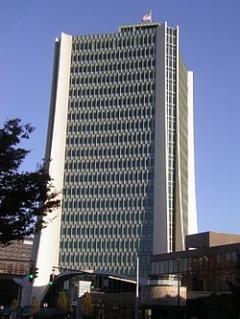
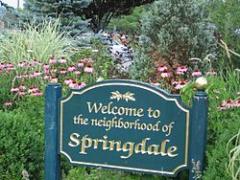
Stamford is made up of approximately 45 distinct neighborhoods, including 2 historic districts and 1 large neighborhood/redevelopment project, Harbor Point, that has yet to be completed:

Stamford possesses four islands in Long Island Sound: Grass Island, Greenway Island, Jack Island and Vincent Island.
The commonly known neighborhoods throughout Stamford (with ZIP Codes that roughly cover the same areas) are as follows:
The population density is 3,101.9 people per square mile (1,197.5/km ²).
The proportion of the population under the age of 18 was 22.1%, from 18 to 24 was 7.4%, from 25 to 44 was 35.0%, from 45 to 64 was 21.7%, and 65 years of age or older were 13.8%. The median age was 36 years. For every 100 females there were 93.7 males. For every 100 females age 18 and over, there were 90.9 males.
Stamford has one of the highest educated populations in the US. Nine out of ten are high school graduates. Those possessing a bachelor's degree or higher is estimated at 45.9% of the population. Stamford is tied with Iowa City, Iowa for the US metropolitan area with the highest percentage of the adult population holding a bachelor's degree or higher; 44 percent of adults hold a degree.
The 2009 Census Population estimate for Stamford is 118,787. A 2009 Census survey estimated 48,676 housing units to be in existence. The median age of 36.6 is only slightly higher than the US median age of 36.4. Stamford's population characteristics are as follows (Source:U.S. Census Bureau, 2005-2009 American Community Survey):
One out of three residents are foreign born. A language other than English is spoken at home by 42% of the population. The main ancestries of the population (Source: 2000 US Census Bureau) are: Italian (16.9%), Irish (10.5%), German (6.6%), Polish (5.6%), and Russian (3.1%). The top ten countries of origin for the foreign-born population (Source: 2000 US Census Bureau) are:
There are 47,317 housing units at an average density of 1,253.6 per square mile (484.0/km ²). There are 45,399 households out of which 28.7% had children under the age of 18 living with them, 48.5% were married couples living together, 11.5% had a female householder with no husband present, and 36.2% were non-families. 28.7% of all households were made up of individuals and 9.8% had someone living alone who was 65 years of age or older. The average household size was 2.54 and the average family size was 3.13.
According to a 2007 estimate, the median income for a household in the city was $72,315, and the median income for a family was $88,205. Males had a median income of $48,386 versus $36,958 for females. The per capita income for the city was $34,987. About 5.4% of families and 7.9% of the population were below the poverty line, including 8.7% of those under age 18 and 9.7% of those age 65 or over.
Stamford is mostly Democratic, home to about 21,500 active registered Democrats and 14,000 Republicans in October 2005. The partisan ratio was 1.5 Democrats per Republican. 100 individuals were registered with minor parties, while roughly 20,000 did not have any party affiliation.
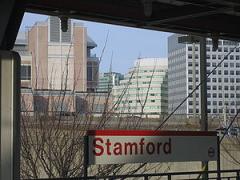
Stamford is located on the main branch of the New Haven Line on the Metro-North Railroad, the commuter rail system for northern metropolitan New York City. Stamford is the third busiest station on the Metro North system and serves as a major transfer point for local trains. Stamford Station is also the terminus of a Metro-North branch that ends in New Canaan, 8 miles (13 km) away, and a part-time terminal of Shore Line East trains. Two smaller train stations in Stamford are Glenbrook and Springdale, both a part of the New Canaan branch. With a recent spike in development in the East Side neighborhood, the city is considering putting in a proposal to construct a new stop to service the East Main Street area close to the New Canaan branch overpass.
Commuter trains come into Stamford from all points between New London to the east and New York (Grand Central Terminal) to the south. Several express (non-stop) trains leave Stamford each morning and evening for Grand Central. The average non-stop commute is forty-five minutes. Stamford has seen a significant increase in ridership. Much of this increase is a result of reverse commuting, individuals commuting from New York City to Stamford for work. Trains operate from the Stamford station between 4:43 AM (first departure to Grand Central) until 12:25 AM (last departure to Grand Central). On the weekends the first departure for Grand Central occurs at 5:03 AM. Fares during rush hour (on peak) are higher than during non-rush hour (off peak). On peak fares are charged between 4:43 AM ae 9:10 AM for trains originating to Grand Central. Trains in transit to Stamford are charged on peak fares from 5:35 AM ae 8:37 AM and from 4:02 PM ae 7:40 PM. On peak fares do not apply on weekends and/or holidays. Tickets can be bought on board, yet the surcharge can make the price steep.
Stamford also serves as a station along the Amtrak route. Acela, the high speed train service between Boston and Washington, makes several daily stops in Stamford. Amtrak's Regional (Springfield, Massachusetts to Washington, D.C.) and Vermonter (Saint Albans, Vermont to Washington, D.C.) also make daily stops in Stamford. Amtrak tickets can be purchased on the upper level of the Stamford station.
Late in 2007 the city contracted a private San Francisco company to conduct a 6 month feasibility study to look at the possibility of creating an inner-city light rail line. With the proposed Harbor Point development set to break ground in the South End neighborhood sometime in 2008, the idea is to create a line that would connect the new developments to points north, such as the transportation center, Landmark Square in downtown and other various points up to the Bulls Head area.
Stamford is within 45 minutes to 2 hours of six major airports: two regional, four international. Regional: Westchester County Airport (often referred to as White Plains Airport) which borders the town of Greenwich and Tweed-New Haven Regional Airport. International: LaGuardia Airport and John F. Kennedy International Airport both in Queens, N.Y., Newark Liberty International Airport in Newark & Elizabeth, New Jersey and Bradley International Airport in Windsor Locks, Hartford County, Connecticut
City bus transportation is provided by CT Transit, which is run and financed by the Connecticut Department of Transportation. The main terminal is adjacent to the train station on State Street, under the I-95 highway. Bus service runs along major arterial roads through the towns of Darien, Norwalk, Greenwich and Port Chester, New York. A non-stop direct route is also offered to White Plains, New York. Commuters can connect in Norwalk to points as far east as Milford and as far north as Danbury. Additional connections can be made in Port Chester and White Plains to all points covered by the Bee-Line bus system in Westchester County.
Greyhound provides some bus service from the lower level of the Stamford train station. Same bus service is provided to New Haven (Union Station), Boston (South Station), and New York (Port Authority).
Two limited-access highways run through the city. Interstate 95 serves as the main route through downtown Stamford with four exits (6-9). The Merritt Parkway runs through the northern part of the city. This road is designated for passenger vehicles only. Any congestion on the Merritt Parkway is mostly likely to occur on the southbound lane in the morning and the northbound in the evening (route to and from New York). At night, due to the absence of lighting, visibility on the Merritt Parkway is relatively poor. Stamford exits on the Merritt Parkway are 33-35, and exit 36 is just over the border in New Canaan.
Stamford is also served by four other state highways. Route 1, also known as Main Street in Stamford, is also used as a major artery during the morning and evening commute. Most traffic via Route 1 is short distance or fairly local, yet vehicles have utilized Route 1 during times of heavy congestion on I-95 as a re-route. Route 137 (Washington Boulevard and High Ridge Road) is the main north-south road of the city and runs from the Stamford Transportation Center and serves the Turn of River, North Stamford, and High Ridge sections of the city. Route 104 (Long Ridge Road) branches off from Route 137 to serve the Long Ridge section. Route 106 (Courtland Avenue) serves the Glenbrook neighborhood and continues towards the town of Darien.

Stamford's cluster of corporate headquarters includes a number of Fortune 500, Fortune 1000 and Courant 100 companies.
Among the larger companies with headquarters in Stamford are World Wrestling Entertainment, Tasty Bite, Pitney Bowes, Gen Re and Charter Communications. UBS also has its North American headquarters here and its trading floor holds the Guinness World Record as the largest column-less trading floor in the world. Royal Bank of Scotland moved its North American operations into Stamford in 2009, including its RBS Greenwich Capital subsidiary.
In recent years, many large corporations have moved offices outside of the city due to the high rental cost, including Xerox, MeadWestvaco, International Paper, GE Capital, NBC and Clairol. The Harbor Point development, located in the South End, is one of the largest private-sector development projects in the United States. Many large retail stores, such as Design within Reach and Fairway Market have moved in, along with multiple hedge funds.
Stamford was the ninth-safest city in the United States in 2006 (among cities with populations of 100,000 or more), up from the 11th safest in 2005, according to the FBI. The 2006 ranking represented the sixth consecutive year the city ranked in the top 11. FBI crime statistics for the city showed crime went down 1.7 percent in 2006 because of a plunge in property crimes. But the rate of violent crime went up by a total of 29 percent in the two years 2005 and 2006 combined. The increase was due in part due to violent gang battles, often on the West Side.
The violent crime rate climbed five years in a row up through 2006, and the 2005 increase was also in the double digits. The city's 300-officer police force responded to 393 reports of violent crimes in 2006, up from 353 in 2005 and 305 in 2004. The total number of serious assaults dropped from 183 in 2005 to 172 in 2006, according to city records. Robberies rose from 150 to 197 in 2006. Serious assaults dropped 6 percent.
There were three homicides and 23 rapes in 2006, up from two homicides and 18 rapes in 2005. The city reported 2,697 total crimes. With populations close to that of Stamford, Bridgeport (ranked 25th) reported 8,496, Hartford (ranked 26th) reported 10,955 and Waterbury reported 6,447 (New Haven hasn't reported statistics to the F.B.I. in years.)
A not-for-profit agency, Stamford Emergency Medical Services (SEMS) provides pre-hospital emergency care in Stamford, Connecticut. SEMS also provides contracted paramedic intercept response to Darien Emergency Medical Services, located in Darien, Connecticut. SEMS is the only Connecticut EMS service accredited by the Commission on the Accreditation of Ambulance Services (CAAS). All SEMS units are staffed by at least one Connecticut-licensed paramedic. Stamford EMS currently has a fleet of 8 Ambulances, 3 Supervisors Units, as well as a Special Operations Unit, an all terrain vehicle capable of transporting patients, and bicycle teams mobilized for special events. Stamford EMS headquarters is located at 684 Long Ridge Road.
Fire protection in the city of Stamford is provided by the paid Stamford Fire Rescue Department(SFRD) and 5 all-volunteer Fire Departments: Glenbrook-New Hope, Belltown, Springdale, Turn of River, and Long Ridge. The Stamford Fire Rescue Department operates out of 7 Fire Stations(including 2 Substations) and share quarters with 2 volunteer fire departments(Glenbrook-New Hope and Springdale). The SFRD's primary response district includes the southern, more urban sections of the city, including Downtown, East Side, West Side, Woodside, and South End areas of the city. The 5 all-volunteer fire departments' primary response districts include the Northern, more residential sections of the city, from Downtown to the New York State border. The SFRD's 290 paid members staff a total of 9 Engines(including 2 Quints), 3 Trucks, 1 Heavy Rescue, and a Deputy Chief's Command Vehicle. The Stamford Fire Rescue Department responds to over 11,000 emergency calls annually. The 5 all-volunteer fire departments each operate 1 to 2 Fire Stations in their own tax districts. The volunteers mann a combined apparatus fleet of 14 Engines, 3 Trucks, 5 Rescues, and their own Command Vehicles, as many other special units and respond to all calls in their respected districts in conjunction with the paid fire department.
Budgeting and districting of the various fire departments throughout the city has been unstable since 2007, due to an extended legal conflict between the volunteer departments and the Malloy administration. As of May 16, 2012, a decision was reached by the city's charter revision committee to combine the paid and volunteer fire departments into one combination fire department, known as the Stamford Fire Department. The new department would be headed by a paid Chief of Department, appointed by the mayor, and 2 paid Assistant Chiefs, 1 appointed by the mayor to oversee the operations of the paid wing of the new department, and 1 appointed by the volunteer fire companies to oversee the operations of the volunteer wing of the new department. The joing of the paid and 5 all-volunteer fire departments would promote better public safety for the city, a smoother incident command system, and a better incident response system.
The Stamford Police Department(SPD) is Stamford's only police force and has lost four officers in the line of service since 1938. The 2008 force was composed of 1 chief, 2 assistant chiefs, 7 captains, 11 lieutenants, 52 sergeants, 215 officers and 67 civilian employees. Aside from Police Headquarters, located at 805 Bedford St. in Downtown Stamford, SPD also operates substations in Stamford's West Side at Wilson St. and W. Main St. and at 1137 High Ridge Rd and Hope Street. The current Chief of Police is Robert Nivakoff.
Stamford has branches of the University of Connecticut, University of Bridgeport and Sacred Heart University. The University of Connecticut's campus is located in a large modern building in downtown that opened in 1998 after extensive renovations to an abandoned former Bloomingdales store that closed in 1990. The branches of the University of Bridgeport and Sacred Heart University are located in the River Bend Executive Center, Fairfield County's premier communication and information high tech park. All are commuter campuses.
As no study has been conducted to assess the cost of education in Stamford, it is difficult to tell whether or not Stamford has a well-funded public education system. Although providing a public education is a state responsibility, Connecticut ranks near the bottom in state share of public education expenditures. Thus, the majority of education funding must come from local governments like that of Stamford. According to the State Department of Education, in the 2004-05 academic year, 42.7% of Stamford's public school students were economically disadvantaged, 34.8% did not have English as a home language and 11.6% were students with disabilities. Research has shown that these populations need additional resources to meet state academic standards. Owing to the state school finance system, the burden of these extra necessary costs of education falls primarily on Stamford's local government. The public school system is an integrated district with racial balance requirements exceeding those of the state of Connecticut. State standards require that a school's racial makeup be within 25% of the community's racial makeup. Stamford's standard is a more strict 10%. Over the years, schools have become unbalanced.
Stamford has several public high schools, Westhill High School, Stamford High School, and the Academy of Information Technology and Engineering. The city also has several private schools, including King Low Heywood Thomas, The Long Ridge School, Trinity Catholic High School, Villa Maria School, and Bi-Cultural Jewish Day School as well as two state charter schools: Trailblazers Academy Charter Middle School and Stamford Academy Charter High School, both operated by human services nonprofit Domus.
Stamford's public library, the Ferguson Library, is one of the largest in Connecticut. The main library downtown is the second in the country to rent space to a Starbucks (since September 1999). The store has its own doors to the street and to the library, and is open earlier and later than the library. The library also shows movies and has a used-book store run by Friends of Ferguson Library.
The library has branches in South End, Springdale, and the Turn of River sections of the city, it also has a bookmobile that runs daily to different neighborhoods. The Turn of River branch, officially called the Harry Bennett Branch, is the largest library branch in the state. That branch also has a used book store run by Friends of Ferguson Library.
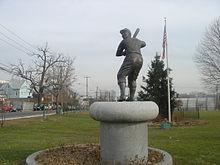
Word Count: 4256





